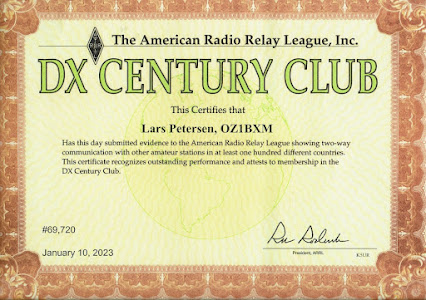Figure 1.
I needed a short 70 cm yagi for working the LEO satellites. In earlier years, I've had a 6-element yagi and I was satisfied with its performance. So I decided to build such an antenna.
The antenna measurements came from ON6MU. However, I made my own drawing (figure 2). All elements and the dipole were made according to the recommendations by ON6MU. Only the boom is a bit slimmer (15 x 15 mm instead of 20 x 20 mm). I had the tubes and the boom lying around, and assembly was easy. The measurements must be accurate down to the millimeter - and that was a challenge!
The black element holders were found in the scrap-box. They were acquired some years ago from hfkits.com (link: Yagi element holder for 15x15 mm boom - HF kits). The balun is copied from innovantennas - they use the same concept. 4-5 tight loops of coax-cable prevents HF-currents running on the outside of the cable. I used 150 cm RG-400 teflon coax, and it was terminated with an N-connector. Figure 3 shows the balun before it was made water-proof.
Figure 4.
Figure 4 shows how the dipole is mounted on the boom using 2 element holders. The dipole is isolated from the boom. The coax-cable center conductor is soldered to the left solder lug; and the coax braid to the right one.
I did not use stainless screws and mutters for assembly, so I painted all screws/mutters after fitting them to avoid corrosion. Where the coax-cable is connected to the dipole, the cable was secured against moisture. I used PlastiDip for this purpose. Otherwise, the braid may detoriate due to water ingress.
The antenna was mounted on a 1½" steel mast turned by a rotator (Yaesu G-600). From 7.5 meters above ground, the antenna heard two terrestical UHF beacons: OZ7IGY at 227 km (weak signal) and LA8UHF at 322 km (normal signal). I listened for the LEO satellite RS-44, and its beacon was heard at a distance of 4000 km. The antenna works to my satisfaction, and I'll use it from now on!
Antenna SWR is 1.3 between 432-438 MHz, and this figure is satisfactory.







